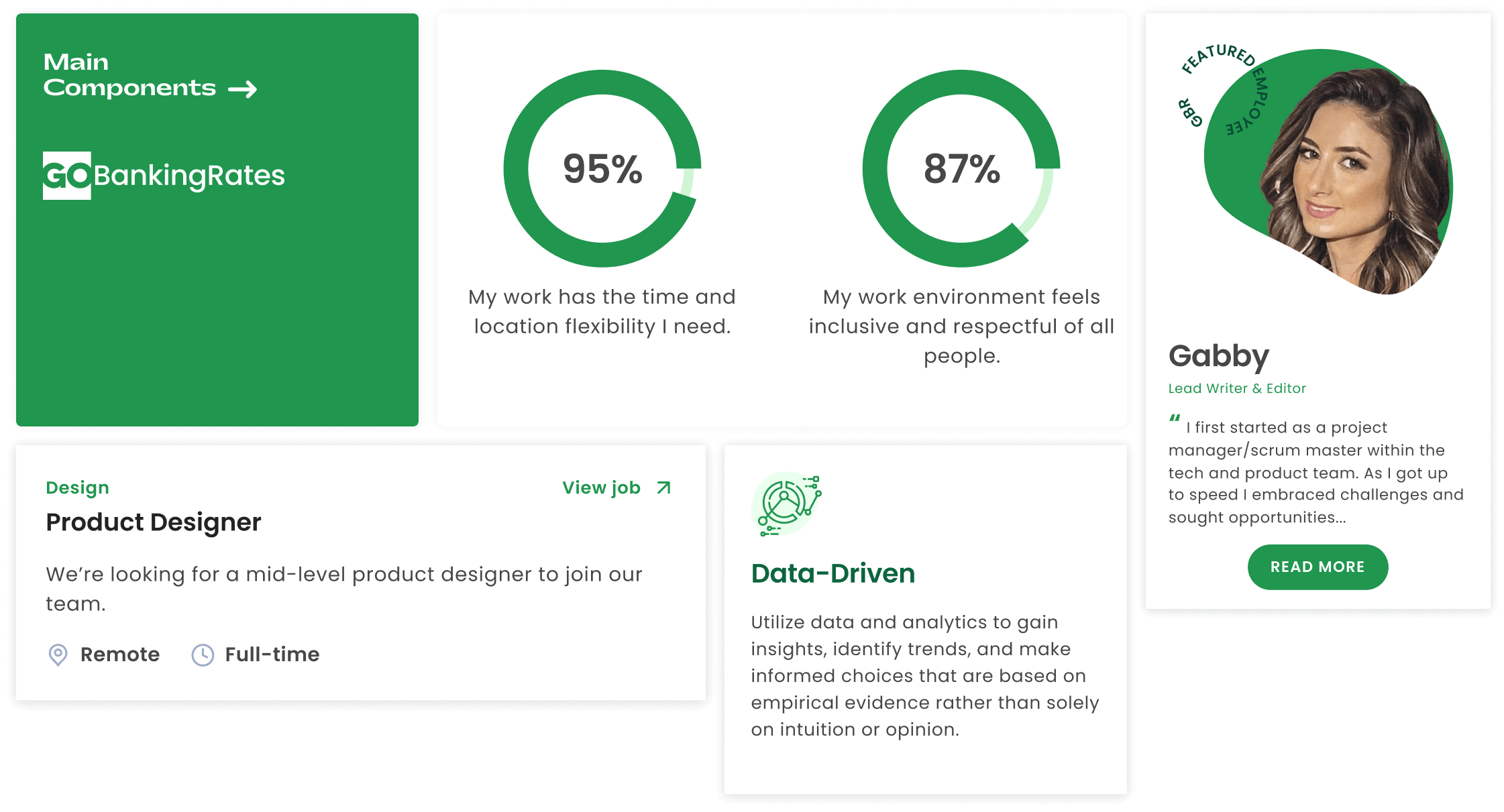The GOBankingRates platform underwent a strategic redesign to tackle declining user engagement rates and low application submissions in the job section. The goal was to create a user-centric experience that not only increased interaction but also streamlined the process for job seekers. As an internal designer, I collaborated closely with the Head of Design and key stakeholders to deliver a solution that aligned with both user needs and business objectives, ensuring the redesign addressed pain points and fostered higher engagement and conversions.

Problem
The GOBankingRates platform faced a significant decline in user engagement, particularly within the job section, where application submissions had dropped. Users were struggling to navigate the job listings, leading to decreased interaction and a lower volume of applications. This trend was affecting the platform’s ability to effectively connect job seekers with opportunities, which ultimately impacted business goals.
GoalsThe primary objectives of the redesign were:
Increase User Engagement: Enhance the user experience to encourage more interaction with the job section, improving overall engagement metrics.Boost
Application Submissions: Streamline the application process to make it easier for users to apply for jobs, ultimately leading to an increase in job submissions.
Align with Business Goals: Ensure the redesign not only addressed user needs but also supported GOBankingRates' broader business objectives of driving conversions and retaining users.
To address the issues of declining user engagement and low job application submissions, we followed a collaborative and user-centered approach that involved multiple stages of research, design, and iteration.
1. User Research and Analysis
We began by analyzing user behavior through analytics and feedback to understand pain points in the job section. User interviews and a competitive analysis helped uncover areas for improvement.
2. Ideation and Concept Development
Based on research insights, we brainstormed ideas with the Head of Design and stakeholders. We focused on simplifying the job search and application process. Low-fidelity wireframes and interactive prototypes were developed to test different solutions.
3. Design Refinement and Collaboration
Once concepts were validated, we moved to high-fidelity designs, ensuring a modern, intuitive layout. We included trust-building elements, streamlined application forms, and clear calls to action. Feedback was gathered throughout to refine the design.
4. Implementation and Testing
The final designs were handed off to the development team for implementation. We ran tests to evaluate how well the redesign improved engagement and application submissions.
5. Monitoring and Iteration
After launch, we tracked key metrics like engagement and application rates. This data guided further tweaks to optimize the design and meet user and business goals.




The project led to [specific results, e.g., "a 25% reduction in bounce rates and a 40% increase in task completion rates"]. Key improvements included: